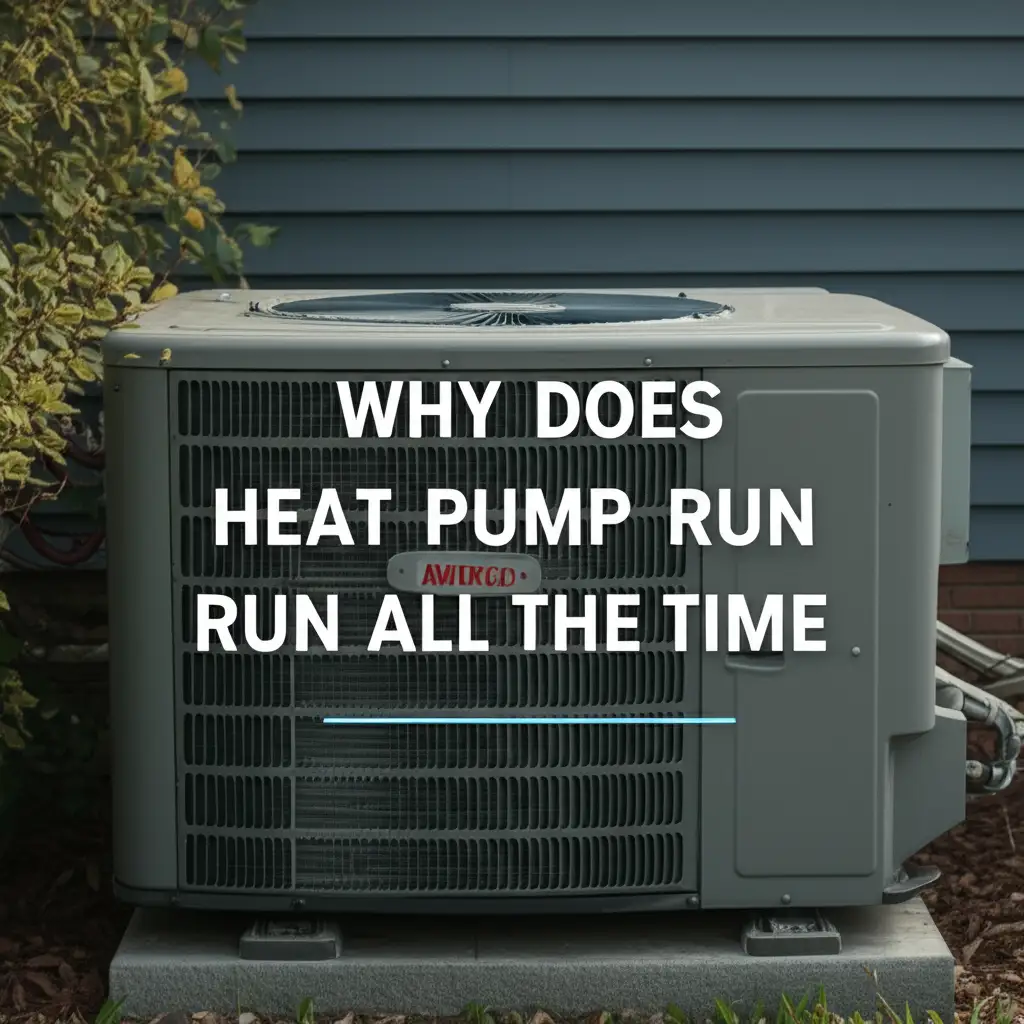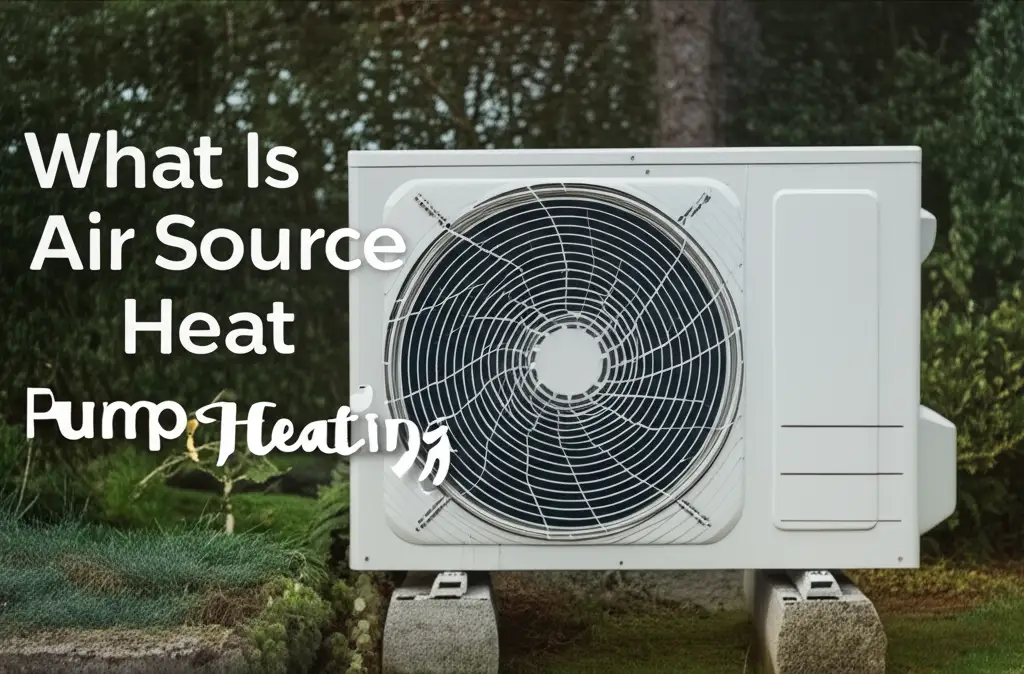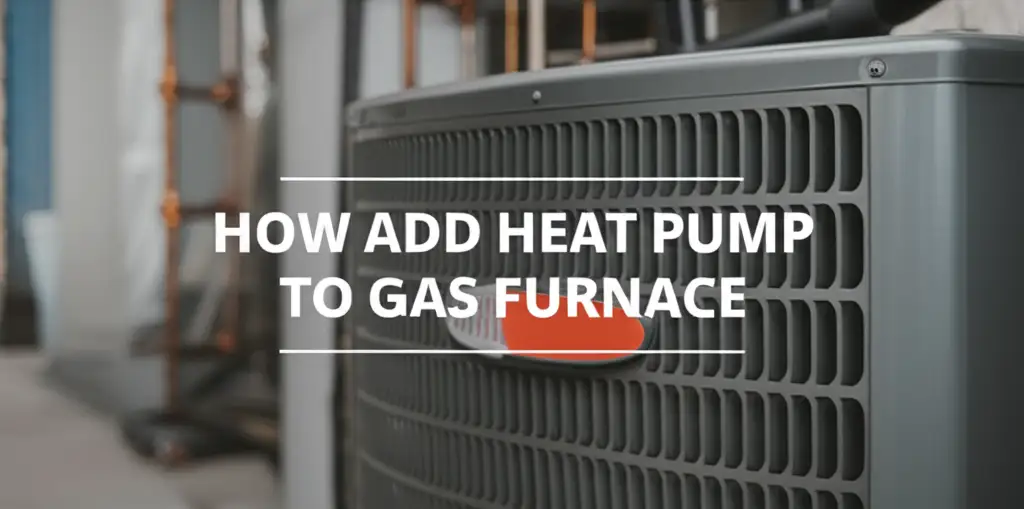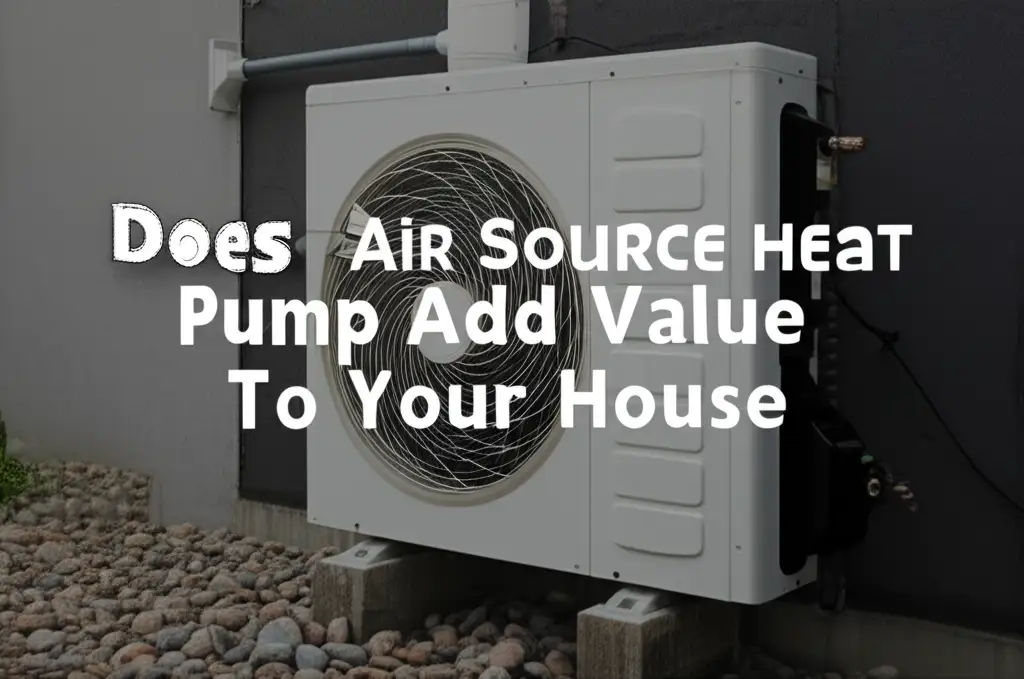· Todd Martin · Home Improvement · 17 min read
How Far Can Heat Pump Be From House
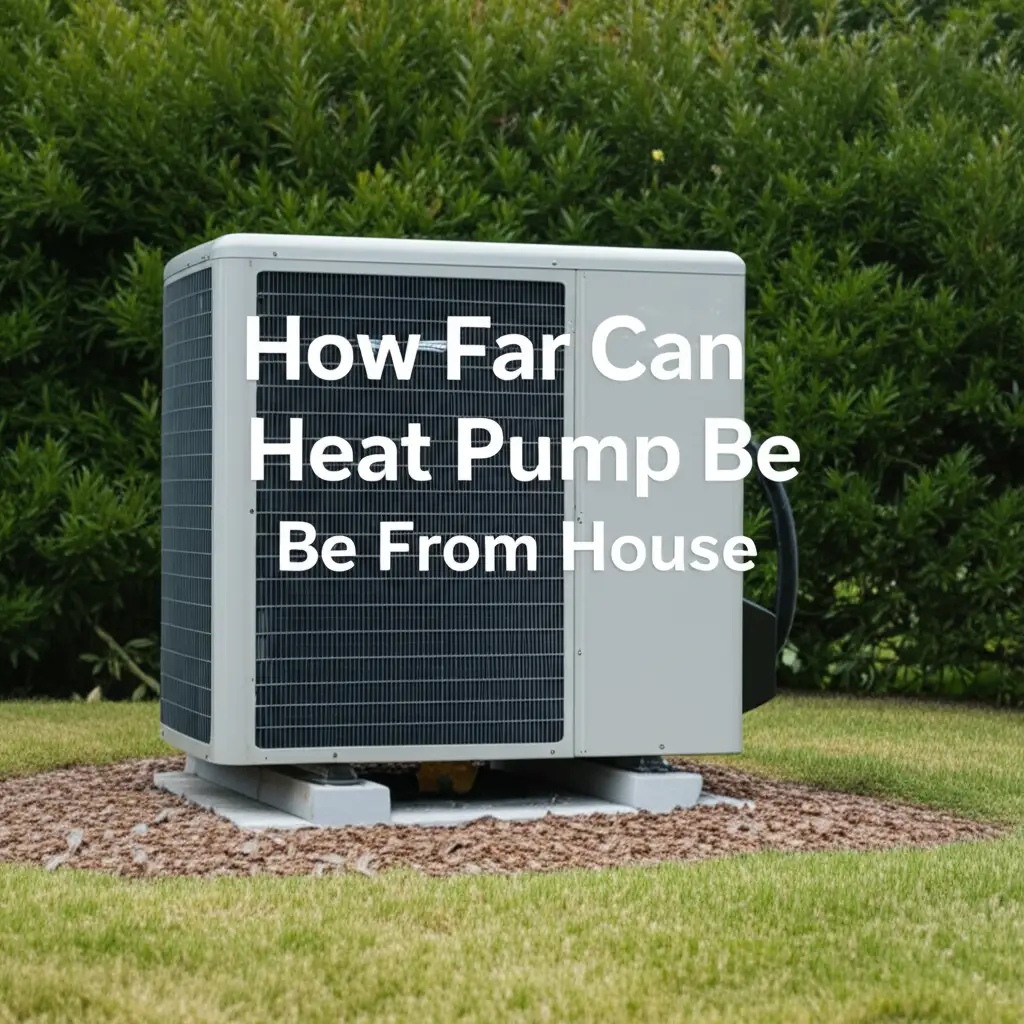
Optimal Heat Pump Distance: How Far Can It Be?
Choosing the right spot for your heat pump’s outdoor unit is more important than you might think. Many homeowners ask, “How far can heat pump be from house?” It is a vital question. The distance affects everything from your system’s efficiency to its overall lifespan and even installation costs.
Finding the perfect balance between practical placement and peak performance is key. We will explore the factors that determine this ideal distance. We will discuss common issues that arise from improper placement. By the end, you will understand how to ensure your heat pump operates effectively.
Takeaway
- Optimal Distance: Aim for 15-50 feet for most residential heat pumps.
- Key Factors: Refrigerant line length, electrical wiring, airflow, noise, and aesthetics all play a role.
- Efficiency Impact: Longer lines can reduce efficiency and increase energy bills.
- Cost Considerations: Greater distances increase installation material and labor costs.
- Professional Advice: Always consult with an HVAC professional for specific placement.
How Far Can a Heat Pump Be From Your House?
Heat pumps typically have optimal refrigerant line lengths ranging from 15 to 50 feet for peak performance. While longer runs up to 150 feet are possible with specific system designs and charge adjustments, they often increase installation costs and may reduce efficiency due to greater heat loss or gain.
Understanding Heat Pump Placement Factors
The distance a heat pump can be from your house depends on several critical factors. These elements directly affect the system’s performance, efficiency, and installation cost. You need to consider each one carefully before deciding on a spot. Let’s break down the main considerations that guide optimal heat pump placement.
Refrigerant Line Length Limits
Refrigerant lines are the copper tubes that connect your outdoor heat pump unit to the indoor air handler. These lines carry the refrigerant that absorbs and releases heat. Every heat pump system has a specified maximum length for these lines. Going beyond this limit can cause significant problems for your unit.
Exceeding the maximum line length can lead to reduced system capacity and efficiency. The compressor has to work harder to move refrigerant over longer distances. This extra work uses more energy and puts strain on components. Most residential systems work best within a 15 to 50-foot range. Some systems allow for longer runs, up to 150 feet, but they need special considerations. For more details on common distances, you can read about how far can an air source heat pump be from house.
Electrical Wiring and Drainage Requirements
The heat pump’s outdoor unit requires a dedicated electrical circuit. The distance between the unit and your main electrical panel impacts the wiring cost. Longer distances mean more wire, which can significantly increase material expenses. You might also need thicker gauge wire for longer runs to prevent voltage drop.
Proper drainage is another key consideration. The outdoor unit produces condensation during operation, especially in cooling mode. This water needs to drain away from your house’s foundation. Positioning the unit on a level pad with good drainage prevents water pooling and potential damage.
Airflow and Clearance Needs
Heat pumps need sufficient airflow to operate efficiently. The outdoor unit draws air in, extracts or releases heat, and then expels the air. Obstructions can block this airflow, reducing the unit’s ability to exchange heat. This forces the system to work harder, wasting energy.
Manufacturers specify minimum clearances around the unit. This usually means leaving several feet of clear space on all sides and above. Avoid placing the unit too close to walls, fences, or dense shrubbery. Consider how the unit’s placement affects the aesthetic appeal of your property. For instance, can you put an air source heat pump on front of house is a common question related to appearance and regulations.
Impact of Distance on Heat Pump Efficiency
The distance your heat pump is from your house directly impacts its operational efficiency. Efficiency is crucial for energy savings and comfort. Understanding this relationship helps you make smart placement decisions. Improper distance can lead to higher energy bills and reduced system lifespan.
Energy Loss Over Distance
Refrigerant lines carry heat between the outdoor and indoor units. When these lines are very long, heat loss or gain can occur. In heating mode, the lines can lose some heat to the colder outdoor air. In cooling mode, they can gain heat from warmer outdoor air. This means the system has to work harder to deliver the desired temperature.
This “thermal loss” reduces the system’s overall efficiency. While insulation wraps around the lines help, they do not eliminate the issue entirely. Shorter line runs minimize these losses, ensuring more of the heat or cool air reaches your living space.
Compressor Workload and Lifespan
A heat pump’s compressor is its heart. It circulates the refrigerant throughout the system. When refrigerant lines are longer, the compressor must exert more effort to move the refrigerant. This increased workload puts more strain on the compressor.
Over time, this added stress can shorten the compressor’s lifespan. It also leads to more frequent maintenance needs or premature failure. Keeping the lines within the recommended length helps the compressor work efficiently and extends the life of your entire heat pump system. This also ensures your heat pump provides reliable heating and cooling for years to come.
Sizing and System Design
The ideal distance also ties into the heat pump’s overall sizing. An HVAC professional considers the size of your home and its heating and cooling needs when recommending a heat pump. A properly sized system works efficiently even with optimal line lengths. A system that is too small or too large can have efficiency issues regardless of distance.
Sometimes, a larger heat pump might be needed if extremely long lines are unavoidable. This compensates for efficiency losses. However, upsizing can lead to its own problems, like short cycling. Always ensure you have what size heat pump does my house need properly determined by a qualified technician. They factor in all variables for peak performance.
Cost Implications of Heat Pump Placement
The placement of your heat pump directly impacts the total installation cost. While initial unit cost is significant, installation can add a substantial amount. Understanding these cost factors helps you budget effectively and avoid surprises. Think about both immediate and long-term expenses.
Installation Costs for Longer Runs
Extending refrigerant lines and electrical wiring over greater distances significantly increases material costs. Copper tubing is expensive, and more of it means a higher bill. Similarly, extra lengths of electrical cable and conduit add to the material expense. These items are priced per foot, so costs quickly add up.
Labor costs also rise with distance. Installers spend more time running and securing longer lines. They also need more time for refrigerant charging. The system needs more refrigerant when lines are longer, adding to the material cost. This can make a seemingly simple placement choice much more expensive.
Ductwork Modifications and Expenses
If your heat pump is located far from your existing ductwork, significant modifications might be necessary. New duct runs may need to be installed or existing ones extended. This can be a complex and costly process, especially if it involves cutting through walls, ceilings, or floors. Proper ductwork sizing and sealing are crucial for efficiency.
Poorly designed or leaky ductwork can negate any efficiency gains from optimal heat pump placement. Ductwork modifications add both material and labor costs to the project. Consider the accessibility and layout of your current ducting when choosing a heat pump location.
Long-Term Operating Costs
While initial installation costs are important, consider the long-term operating expenses. A heat pump placed too far from the house can lead to reduced efficiency, as discussed earlier. This inefficiency translates directly into higher monthly energy bills. The extra cost of running an inefficient system can quickly outweigh any initial savings from a less-than-ideal placement.
An inefficient system also puts more strain on components, potentially leading to more frequent repairs or premature unit replacement. This adds to the lifetime cost of ownership. Investing in proper placement during installation can save you money for years to come. Ultimately, a properly installed heat pump can be a valuable addition to your home, and understanding its long-term benefits can help you see does air source heat pump add value to your house.
Optimizing Heat Pump Location for Performance
Achieving optimal heat pump performance involves more than just distance. It requires considering the surrounding environment, noise levels, and accessibility for maintenance. Strategic placement helps your system run smoothly and quietly. It also extends its operational life.
Minimizing Noise and Vibrations
Heat pumps, especially the outdoor units, produce some noise during operation. This noise comes from the fan and compressor. Placing the unit too close to windows, patios, or frequently used outdoor living areas can be disruptive. Consider the noise level when choosing a spot.
Aim to place the unit away from bedrooms and common areas. Soft landscaping, like shrubs, can help absorb some sound. Ensure the unit is on a solid, level pad to minimize vibrations. Anti-vibration pads can also be used under the unit to further reduce noise transmission.
Protecting the Unit from Elements
The outdoor unit is built to withstand various weather conditions. However, strategic placement can offer additional protection. Avoid areas prone to heavy snow accumulation or ice buildup. Placing the unit under an overhang or a dedicated cover can shield it from direct heavy rain and snow.
Ensure the unit is not directly under a dripping eave or water spout. This prevents constant water exposure and potential ice formation in winter. A protected location helps maintain the unit’s appearance and prevents premature wear from harsh weather. Consider how how to keep your heat pump from freezing up can be aided by good placement.
Accessibility for Maintenance and Repairs
Regular maintenance is vital for a heat pump’s efficiency and longevity. The outdoor unit needs to be easily accessible for technicians. This means having enough clear space around it for inspection, cleaning, and repairs. Blocked access can increase service time and costs.
Ensure there is clear access to the electrical disconnect switch and service ports. Avoid placing the unit behind permanent structures or dense, overgrown landscaping. Planning for accessibility from the start makes future servicing simpler and more efficient.
Common Heat Pump Placement Mistakes to Avoid
Even with careful planning, some common mistakes can derail your heat pump’s performance and lead to problems. Being aware of these pitfalls can help you avoid costly errors. I’ve seen these issues frequently in various installations.
Too Close to Obstructions
Placing the heat pump outdoor unit too close to walls, fences, or dense shrubbery is a frequent mistake. This blocks airflow, which the unit needs to efficiently exchange heat. Reduced airflow makes the compressor work harder. This leads to higher energy consumption and decreased heating or cooling capacity. Always leave the manufacturer’s recommended clearance around the unit.
- Blocked Airflow: Causes inefficient operation and increased energy use.
- Reduced Capacity: System struggles to meet heating/cooling demands.
- Overheating: Compressor can overheat due to insufficient ventilation.
- Reduced Lifespan: Constant strain wears out components faster.
Ignoring Local Building Codes and Regulations
Building codes and homeowner association (HOA) rules often dictate heat pump placement. These regulations can specify minimum distances from property lines, windows, or neighboring structures. They might also have rules regarding noise levels or aesthetic requirements. Failing to comply can lead to fines or forced relocation of the unit.
Always check with your local municipality and HOA before installation. This ensures your chosen location meets all legal and community standards. It avoids costly rework later on.
Poor Drainage Areas
Placing the outdoor unit in an area with poor drainage is another common error. The unit generates condensate, especially during cooling cycles. If water pools around the base, it can lead to several problems. It can damage the unit’s components, create a breeding ground for mold, or even undermine the foundation of the pad.
Ensure the ground slopes away from the unit or install a proper drainage system. This directs water away safely. Proper drainage protects your unit and prevents water damage to your property.
Placing in Direct Sun or Wind
While heat pumps are designed for outdoor conditions, extreme exposure can impact efficiency. Placing the unit in constant direct sunlight during summer can increase its cooling workload. The unit works harder to remove heat from already hot air. Similarly, strong, direct winds can affect airflow and reduce efficiency.
- Excessive Sun Exposure: Can increase cooling demand in summer.
- High Wind Exposure: May disrupt airflow across the coils, reducing efficiency.
- Winter Considerations: Avoid locations where snow drifts might bury the unit.
Consider natural shading from trees (but not so close that falling leaves are an issue) or the orientation of your house. A spot with some natural protection from the harshest sun or wind can be beneficial. However, ensure not to block necessary airflow.
Professional Installation and Consultation
When deciding how far your heat pump can be from your house, professional guidance is invaluable. A qualified HVAC technician possesses the expertise to assess your property’s unique characteristics. They ensure your system performs at its peak. This helps avoid costly mistakes and ensures long-term comfort.
Benefits of HVAC Expert Assessment
An HVAC expert performs a comprehensive site survey. They evaluate your home’s layout, existing electrical capacity, and potential challenges. They consider factors like noise, aesthetics, and future accessibility. This assessment goes beyond simple measurements; it involves technical calculations related to refrigerant pressure and airflow.
They also ensure the chosen location complies with all local building codes and manufacturer specifications. Their experience helps them anticipate potential issues that a homeowner might overlook. This professional insight is critical for a smooth installation and optimal system performance.
Ensuring Code Compliance and Warranty
Professional installers understand the specific building codes in your area. They ensure your heat pump placement and installation adhere to these regulations. This prevents legal issues and ensures safety. Compliance often means proper electrical wiring, clearances, and structural support.
Proper installation by a certified professional is also typically a requirement for your heat pump’s warranty to remain valid. DIY installations or work by uncertified individuals can void the warranty. This leaves you responsible for any costly repairs that arise. An expert ensures your investment is protected.
Long-Term Performance and Savings
Choosing the optimal distance for your heat pump with professional help directly translates into long-term savings. A properly placed unit operates at peak efficiency, minimizing energy consumption and lowering your utility bills. It also experiences less wear and tear, reducing the likelihood of expensive repairs.
An efficient heat pump provides consistent, reliable heating and cooling. This enhances your home’s comfort throughout the year. While professional installation has an upfront cost, the benefits of enhanced efficiency, extended lifespan, and peace of mind often outweigh the initial expense. This ensures your heat pump delivers on its promise of efficient home climate control. Knowing how to get heat from Mitsubishi heat pump or any other brand relies on correct initial setup.
Considerations for Different Heat Pump Types
While the general principles of heat pump placement apply broadly, specific types of heat pumps have unique considerations regarding their distance from the house. Understanding these differences helps in planning for different systems. My expertise covers various setups, and each requires a slightly different approach.
Air-Source Heat Pumps
Air-source heat pumps are the most common type. Their outdoor unit looks similar to a central air conditioner. The primary concern for these units is sufficient airflow around the outdoor compressor unit. They draw air from their surroundings to extract or release heat.
- Clearance: Requires at least 12-24 inches of clear space on all sides and above for optimal airflow.
- Noise: Can be a factor, so consider distance from windows and living areas.
- Refrigerant Lines: Adhere to manufacturer’s maximum line lengths, typically 15-50 feet for residential. Longer runs are possible but impact efficiency.
These units are relatively flexible in placement as long as airflow and noise are managed.
Geothermal Heat Pumps
Geothermal heat pumps do not have a visible outdoor unit like air-source systems. Instead, they use underground loops to exchange heat with the earth. The “distance from house” in this context refers to the placement of the internal heat pump unit (usually in a basement or utility room) and the ground loop field.
- Ground Loop Field: This is buried underground, typically in your yard. The size and shape of the loop field depend on your home’s heating/cooling load and available land.
- Indoor Unit: The indoor unit needs to be near your ductwork and electrical panel.
- Distance Impact: The distance between the indoor unit and the ground loop field is less critical than for air-source units, as long as piping is properly insulated. The main consideration is sufficient land for the loops.
Geothermal systems require significant excavation for installation, making the available yard space a primary factor.
Mini-Split (Ductless) Heat Pumps
Mini-split heat pumps offer individual zone control and do not rely on ductwork. They consist of an outdoor unit and one or more indoor air handlers. The outdoor unit connects to each indoor unit via small refrigerant lines and electrical wiring.
- Outdoor Unit Distance: The outdoor unit still has line length limits, often similar to central air-source units (up to 150 feet for some models, but optimal is much shorter).
- Indoor Unit Placement: Indoor units can be placed in different rooms, sometimes far from the outdoor unit. Each indoor unit has its own line set running back to the outdoor unit.
- Aesthetics: The indoor units are visible, so their placement inside rooms is also an aesthetic consideration.
Mini-splits offer more flexibility in placing indoor units. However, the outdoor unit still needs careful placement based on the factors discussed earlier, especially considering noise and line length to the furthest indoor head.
Frequently Asked Questions About Heat Pump Distance
1. Can a heat pump be placed too close to the house?
Yes, placing a heat pump too close to the house can cause problems. It can restrict airflow around the unit, reducing efficiency and increasing energy consumption. Close proximity also means noise from the unit might be more noticeable inside the house or near windows. Always adhere to manufacturer-recommended clearances, typically 12-24 inches from walls.
2. Does a longer refrigerant line impact heat pump efficiency?
Yes, longer refrigerant lines can impact heat pump efficiency. As the refrigerant travels greater distances, it can experience more heat loss or gain, depending on the mode (heating or cooling). This forces the compressor to work harder, reducing the system’s overall efficiency and potentially increasing energy bills. Shorter lines lead to better performance.
3. What is the maximum recommended line length for a residential heat pump?
For most residential heat pumps, the optimal maximum recommended line length is generally between 15 to 50 feet for peak efficiency. While some systems can technically operate with lines up to 150 feet, this often requires special installation techniques, additional refrigerant, and can lead to reduced efficiency and increased costs. Always check your specific unit’s specifications.
4. Are there noise considerations when placing a heat pump far from the house?
While placing a heat pump farther from the house can reduce noise intrusion, distance is not the only factor. The unit’s decibel rating, surrounding obstacles, and even landscaping can affect perceived noise. Ensure the unit is on a stable, level pad to minimize vibrations, which contribute to noise. Always consider your neighbors when choosing a location.
5. Does heat pump distance affect installation cost?
Yes, heat pump distance significantly affects installation cost. Longer distances require more materials, such as copper refrigerant lines, electrical wiring, and conduit. This increases both material and labor costs. More refrigerant may also be needed for longer runs. Choosing a closer, optimal location can help reduce overall installation expenses.
6. Can I move an existing heat pump to a different location?
Yes, you can move an existing heat pump, but it is a complex process. It involves disconnecting refrigerant lines, electrical wiring, and potentially relocating the concrete pad. This process requires a certified HVAC technician to recover refrigerant, safely move the unit, and reinstall it properly, including re-charging the system. Moving a unit can be as costly as a new installation. If you are considering this, you may want to research can you move an air source heat pump.
Conclusion
Understanding “how far can heat pump be from house” is fundamental to efficient home climate control. The ideal distance balances performance, cost, and practicality. We have explored the critical factors, from refrigerant line limits to electrical needs and airflow requirements. Ignoring these can lead to higher energy bills, increased repair costs, and a shorter system lifespan.
By prioritizing optimal placement, you ensure your heat pump operates at peak efficiency. This provides consistent comfort and significant long-term savings. Always consult with a qualified HVAC professional. Their expertise guarantees a compliant and efficient installation for your home. Make an informed decision to maximize your heat pump investment.
- heat pump distance
- HVAC installation
- energy efficiency
- home heating
- cooling systems
- outdoor unit placement
- refrigerant lines


